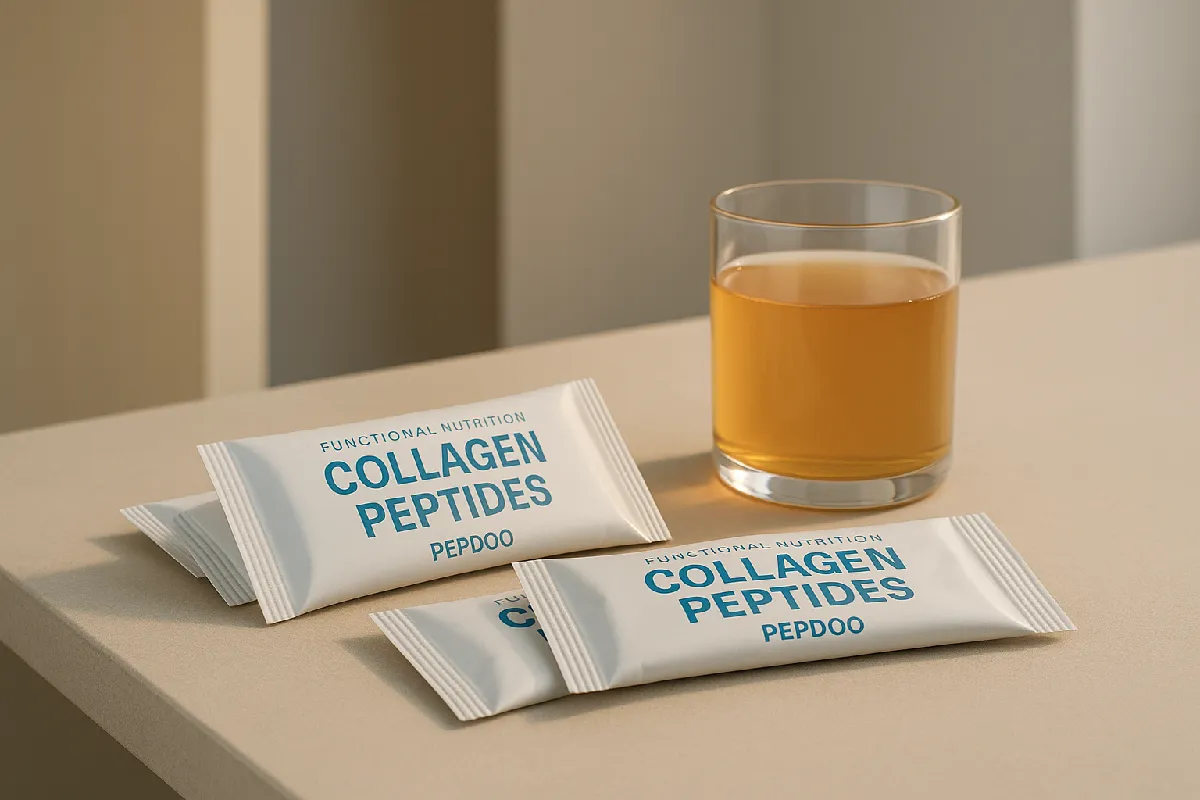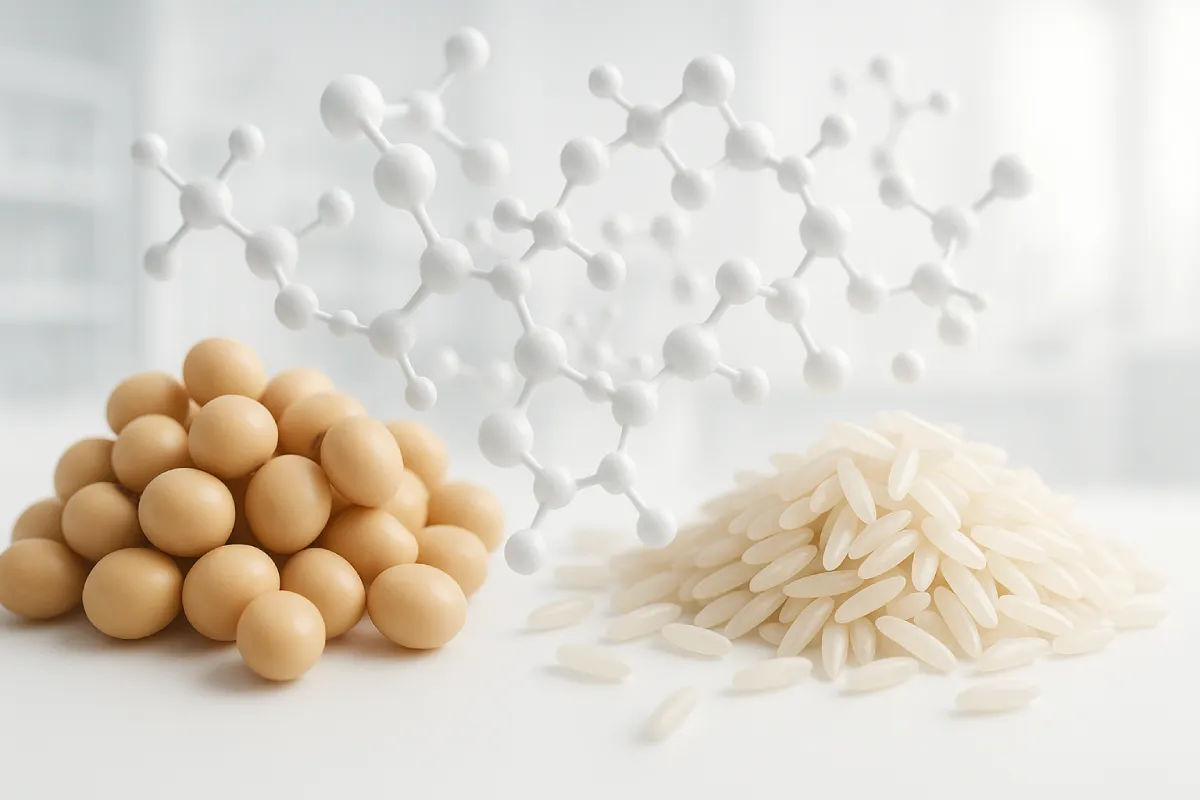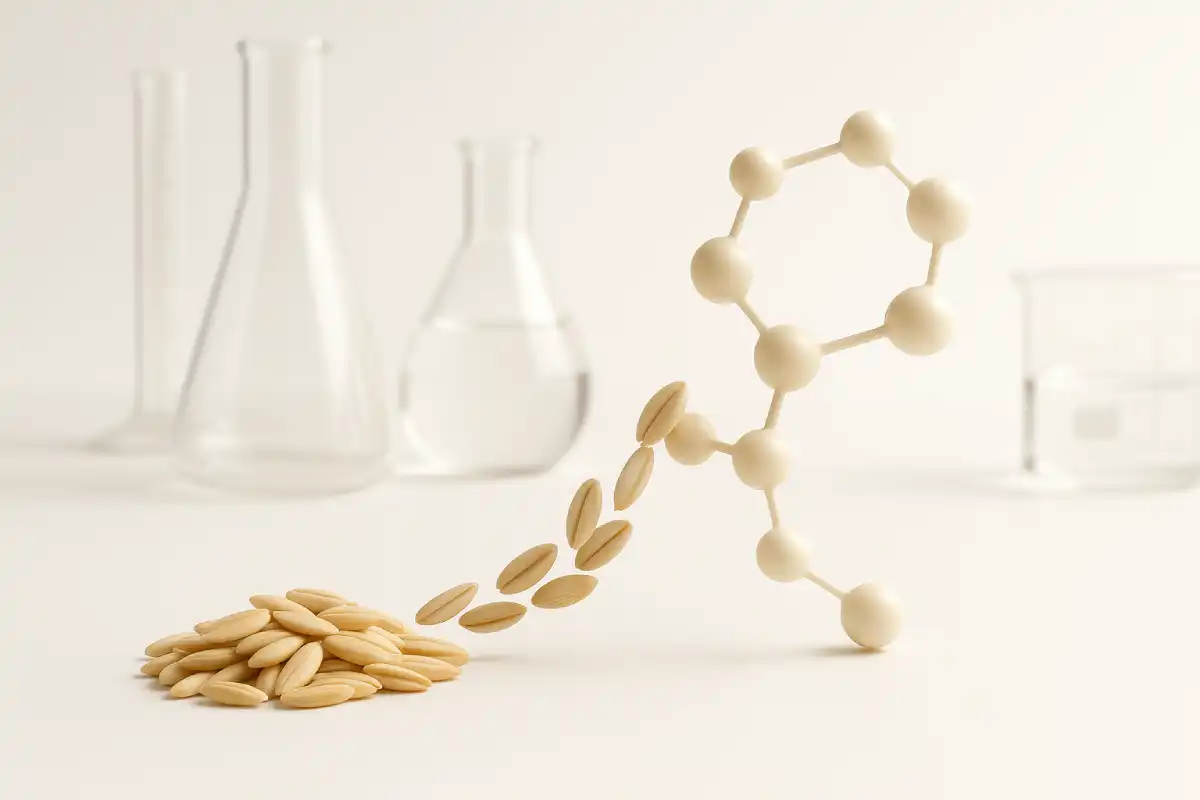As the health and wellness industry continues its evolution toward precision nutrition and functional ingredients, one plant-based compound is quickly rising to prominence: Oat Peptide. Derived from enzymatically hydrolyzed oat proteins, this bioactive peptide offers a powerful blend of gut protection, cardiovascular support, and metabolic modulation—all highly sought-after benefits in today’s health-conscious market.
In this article, we explore what makes oat peptide a rising star in the nutraceutical world, supported by scientific evidence, application potential, and its unique ability to stimulate the GLP-1 pathway for targeted fat management.
1. What Is Oat Peptide? Origins, Composition & Production
Oat peptide is a small-molecule bioactive peptide obtained from oat protein through enzymatic hydrolysis—a natural, non-GMO process that breaks down protein chains into functional peptides with high bioavailability. These peptides, typically <3kDa in molecular weight, are rich in hydrophobic and branched-chain amino acids such as leucine, isoleucine, and valine—crucial for metabolic regulation and anti-inflammatory activity.
What sets oat peptide apart is its plant-based origin, clean-label appeal, and excellent tolerability, making it suitable for a wide range of consumer groups including vegans, vegetarians, and individuals with dairy sensitivities.
2. Gut, Heart, and Metabolic Benefits of Oat Peptide
2.1. Gut Health Support
Oat peptides offer potent protection for the intestinal barrier, helping regulate tight junction proteins (e.g., occludin, claudins) to reduce intestinal permeability. By reducing inflammation in the gut lining, they contribute to improved digestion, absorption, and immune signaling.
Moreover, oat peptides may support the growth of beneficial gut microbes like Lactobacillus and Bifidobacterium, contributing to a balanced microbiota—a core pillar of systemic health.
2.2. Cardiovascular Benefits
Oat peptide exhibits ACE-inhibitory activity, which helps lower blood pressure by blocking the conversion of angiotensin I to angiotensin II. In addition, it supports cholesterol and triglyceride reduction, possibly by modulating hepatic lipid metabolism and promoting bile acid excretion.
Its antioxidant capacity, mainly due to its amino acid profile, protects vascular endothelium and reduces oxidative stress—both critical in preventing cardiovascular disease.
3. Weight Management & GLP-1 Pathway Activation
3.1. GLP-1: The New Frontier in Fat Management
GLP-1 (Glucagon-Like Peptide-1) is a hormone secreted by intestinal L-cells in response to nutrient intake. It plays a key role in:
- Enhancing insulin secretion
- Suppressing glucagon release
- Slowing gastric emptying
- Reducing appetite
Recent studies suggest that certain bioactive peptides—including oat peptide—can stimulate GLP-1 secretion, mimicking the action of synthetic GLP-1 agonists (like semaglutide), but in a natural, food-based format.
3.2. Oat Peptide as a Natural GLP-1 Enhancer
Oat peptides have been shown to interact with intestinal nutrient-sensing pathways, particularly GPR receptors, leading to increased endogenous GLP-1 secretion. This translates to:
- Improved satiety and reduced caloric intake
- Enhanced postprandial glucose control
- Promotion of fat oxidation and inhibition of lipogenesis
Animal studies demonstrate that supplementation with oat peptide can reduce body weight, visceral fat accumulation, and markers of insulin resistance, pointing to its promising role in weight management strategies [1].
3.3. Anti-Obesity Mechanisms Beyond GLP-1
Beyond GLP-1 stimulation, oat peptides may activate AMPK signaling, enhance mitochondrial biogenesis, and downregulate pro-inflammatory adipokines—a multi-pronged metabolic reset for obese or pre-diabetic individuals.
These mechanisms highlight oat peptide’s potential not just as a satiety agent, but as a metabolic modulator that targets the root causes of weight gain.

4. Scientific Evidence Supporting Efficacy
Several in vivo and in vitro studies support the efficacy of oat peptide in metabolic and cardiovascular health:
- Animal studies have shown significant reductions in total cholesterol, LDL-C, and serum triglycerides after oat peptide supplementation [2].
- Cell culture studies demonstrate that oat peptide enhances tight junction protein expression and reduces inflammatory cytokine production [3].
- A recent study found that oat peptide-treated rats had significantly increased levels of endogenous GLP-1 and reduced food intake compared to controls [4].
These findings indicate both functional efficacy and physiological relevance, positioning oat peptide as a next-generation functional ingredient in health-targeted nutrition.
5. Applications in Functional Foods & Nutraceuticals
Thanks to its excellent water solubility, taste neutrality, and stability, oat peptide is versatile in application:
- Meal replacement powders for satiety and metabolic support
- Fat-burning beverages with GLP-1-friendly peptide complexes
- Functional protein bars targeting heart and gut health
- Capsules or sachets for precision weight management formulas
Formulators can also blend oat peptide with prebiotics, plant fibers, or polyphenols to create synergistic gut-metabolism products.
6. Market Trends and Consumer Insights
With the global rise of GLP-1 agonist drugs like Ozempic and Wegovy, there’s growing consumer interest in natural, food-based alternatives that support similar pathways. Oat peptide fits perfectly into this landscape.
Key consumer trends include:
- Desire for clean-label, plant-derived actives
- Preference for multi-functional ingredients (e.g., gut + weight + heart)
- Growing market for preventive nutrition among younger demographics
- Increased demand for oral GLP-1 alternatives in dietary supplement formats
7. Regulatory and Safety Profile
Oat peptide is generally regarded as safe (GRAS) and well tolerated in clinical and dietary use. No major adverse events have been reported in animal studies. However, formulating claims around GLP-1 modulation must be handled carefully, as it borders on hormonal or therapeutic language in some markets.
Recommended usage levels range from 500 mg to 2 g/day, depending on desired function and product format.
8. Challenges and Future Directions
Despite its promising profile, oat peptide does face challenges:
- Clinical validation: More human trials are needed to confirm GLP-1 stimulation and metabolic outcomes.
- Standardization: Peptide profile consistency across batches must be optimized for commercial scale-up.
- Regulatory clarity: Claiming GLP-1-related benefits may face scrutiny in some regulatory environments.
Looking ahead, dual-targeted peptides (gut + metabolism) and AI-driven precision peptide design could enhance the bioefficacy and commercial appeal of oat peptide even further.
9. Why Oat Peptide Is the Next Big Thing in Precision Nutrition
Oat peptide represents a new generation of plant-based functional ingredients, combining clinically relevant benefits for gut integrity, cardiovascular protection, and weight control. With its ability to stimulate GLP-1 secretion, support metabolic pathways, and align with clean-label consumer demands, oat peptide is poised to become a key player in the next wave of precision nutrition.
Whether you’re formulating for heart health, weight management, or gut balance, oat peptide offers multi-functional, science-backed potential—naturally.
10. Partner with Us: Unlock the Full Potential of Oat Peptide
If you’re a functional food brand, dietary supplement manufacturer, or wellness innovation company seeking to develop the next generation of science-backed health products, now is the time to explore oat peptide. At PEPDOO®, we specialize in bioactive peptide innovation and offer high-purity oat peptide ingredients as well as custom-formulated end products tailored to your brand needs.
Whether you’re interested in weight management beverages, gut health solutions, or plant-based GLP-1 boosters, our R&D and production team is ready to co-create unique, clinically relevant solutions with you.
Let’s bring the future of precision nutrition to market—together. Contact us today to learn more about partnership opportunities and sample requests.
11.References
- Park, Y. et al. (2022). Oat Peptides and Metabolic Regulation: GLP-1 Pathway Activation in Obese Models.
- Liu, X. et al. (2021). Hypocholesterolemic Effects of Oat-Derived Peptides in Animal Models.
- Zhao, H. et al. (2020). Bioactive Peptides from Cereals and Their Role in Gut Barrier Modulation.
- Kim, J. et al. (2023). Functional Properties of Enzymatic Oat Protein Hydrolysates on Satiety Hormones.






